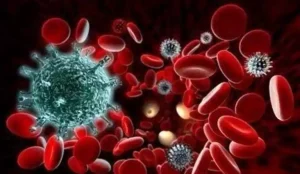Signs Of HIV That Regularly Appear On The Mouth And Skin Of Its Patients.

HIV can manifest in various symptoms affecting the mouth and skin, often indicating a weakened immune system. In the mouth, one common sign is oral thrush, a fungal infection causing white patches on the tongue and inner cheeks. Another oral indication is oral hairy leukoplakia, characterized by white, ridged lesions on the sides of the tongue. Additionally, recurrent oral ulcers and gum disease are prevalent in HIV patients.
On the skin, HIV can cause various dermatological manifestations. One notable condition is seborrheic dermatitis, presenting as red, itchy, and scaly patches on the scalp, face, and other body parts. Herpes simplex virus (HSV) infections, particularly oral and genital herpes, tend to be more frequent and severe in individuals with HIV. Furthermore, HIV-associated dermatoses like eosinophilic folliculitis and psoriasis-like eruptions are observed.
Moreover, Kaposi’s sarcoma, a type of skin cancer linked to human herpesvirus 8 (HHV-8), often develops in HIV patients, presenting as purplish or reddish lesions on the skin or inside the mouth. Skin infections such as fungal, bacterial, and viral infections are also more common due to compromised immunity.
Regular monitoring and prompt medical attention for any suspicious symptoms are crucial for managing HIV-related complications and maintaining overall health. Early detection and treatment of HIV can significantly improve outcomes and quality of life for individuals living with the virus.




